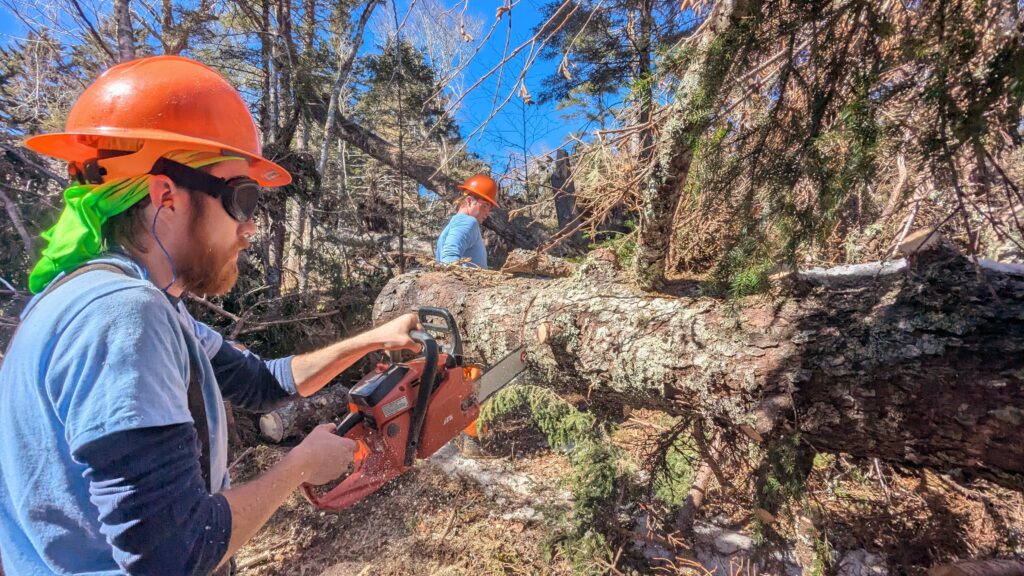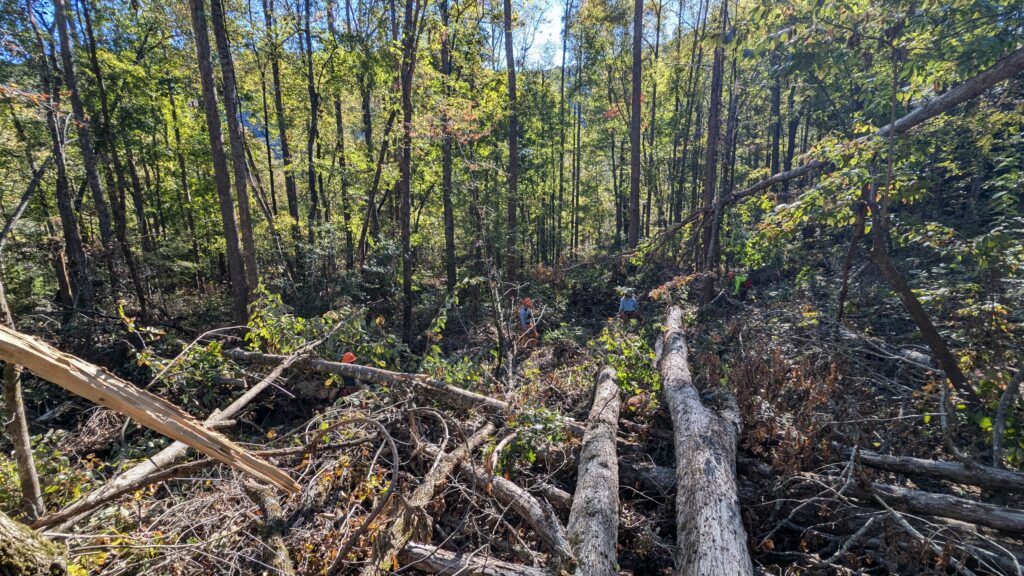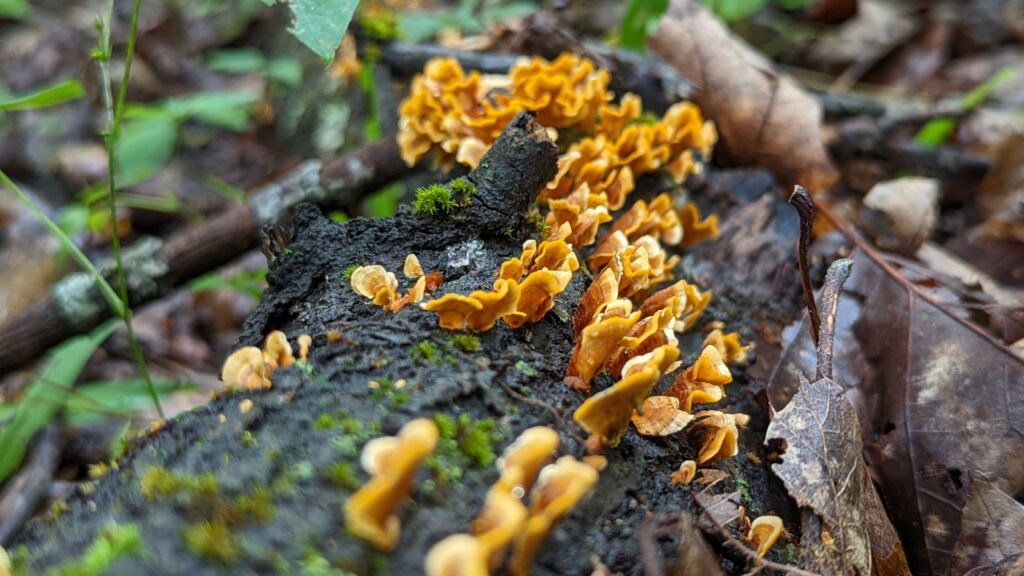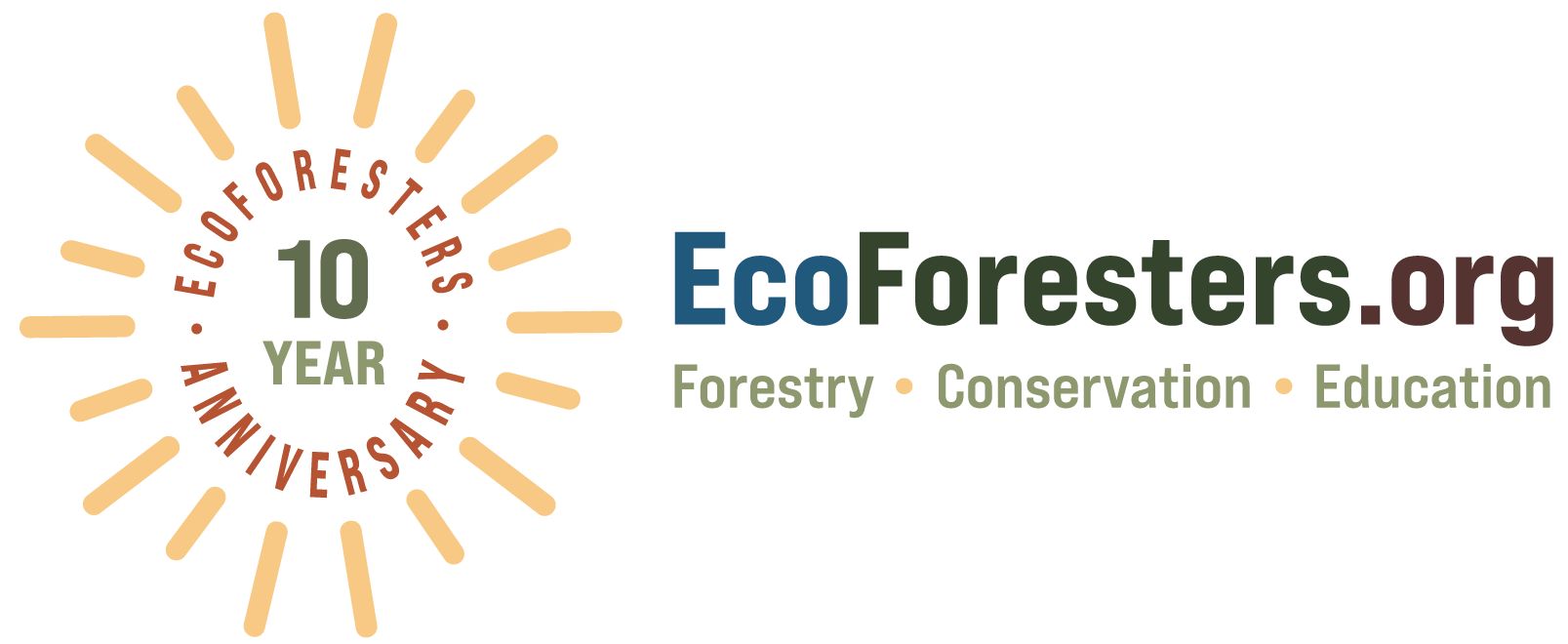Logs Logs Everywhere
The devastation that Hurricane Helene caused will be felt for untold years, among that being a large influx of downed trees of all sizes and species. Landowners have no doubt noticed the increase in coarse woody material deposited on the forest floor. While some may consider it unsightly, it’s important to look at the fallen trees through an ecological lens and recognize the positives this glut of material can offer the forest habitat.
We talked with Joey Borders, Forester with EcoForesters, for his take on what the storm aftermath means for organisms large and small. He explained that a natural forest is a shifting matrix of successional stages, with historical storm disturbances shaping the forest.
“What we have now in the modern era is second or third growth forests that have been shaped by logging. Trees are all cut at once, resulting in a continuous canopy that has been in place for decades, and an altered understory that lacks structural diversity,” he said.

When Helene knocked down so many trees, it tipped the scales in favor of a more natural forest that provides habitat for all organisms in the food chain. The coarse woody material (not debris) provides mulch that regulates moisture on the forest floor, fertilizer for emerging plants, and habitat for everything from insects, rabbits, rodents, snakes, ground nesting birds and woodpeckers looking for meals in snags. This woody material was greatly lacking before the storm, and now the needle has been greatly turned the other way, providing an opportunity for the food chain to thrive.
“In terms of establishing historical conditions, this kind of disturbance is representative of these stand replacing disturbances that we often talk about that have historically shaped our forest. In that regard, that would be a positive,” said Borders. “There are opportunities that come out of an event like this.”
Species that thrive in early successional habitats like ruffed grouse, golden-winged warbler and even deer and foraging ungulates will have increased habitat to explore, said Borders.

“As the forest grows in, there will be shrubs and herbaceous species that thrive with the increased spatial and light resources, all species that either forage or nest in those circumstances will have an advantage,” said Borders.
Since our forests have been greatly shaped by human influence, there are risks to just walking away and allowing them to naturally regenerate. Non-native invasive species have a chance to explode in the sunlight. Borders also said that since the forests have had a consistent canopy for so long, mesic species (ones that thrive in more moisture) have an advantage over others.
In terms of dealing with fallen trees in a landowner’s forest in the most ecological way possible, non-traditional forest products such as cultured mushrooms on logs are a great ingredient in the mix. Borders said that a diversity of thinking will be required, with a mix of using the logs and mitigating fuels that should be a concern.
“Salvage logging is an option that I think is appealing to a lot of people because it allows you to offset some of the cost of managing those fuels, but there’s an increasingly limited window we have to salvage logs. There’s only going to be a few more months where it’s reasonable to get merchantable timber,” he said.

